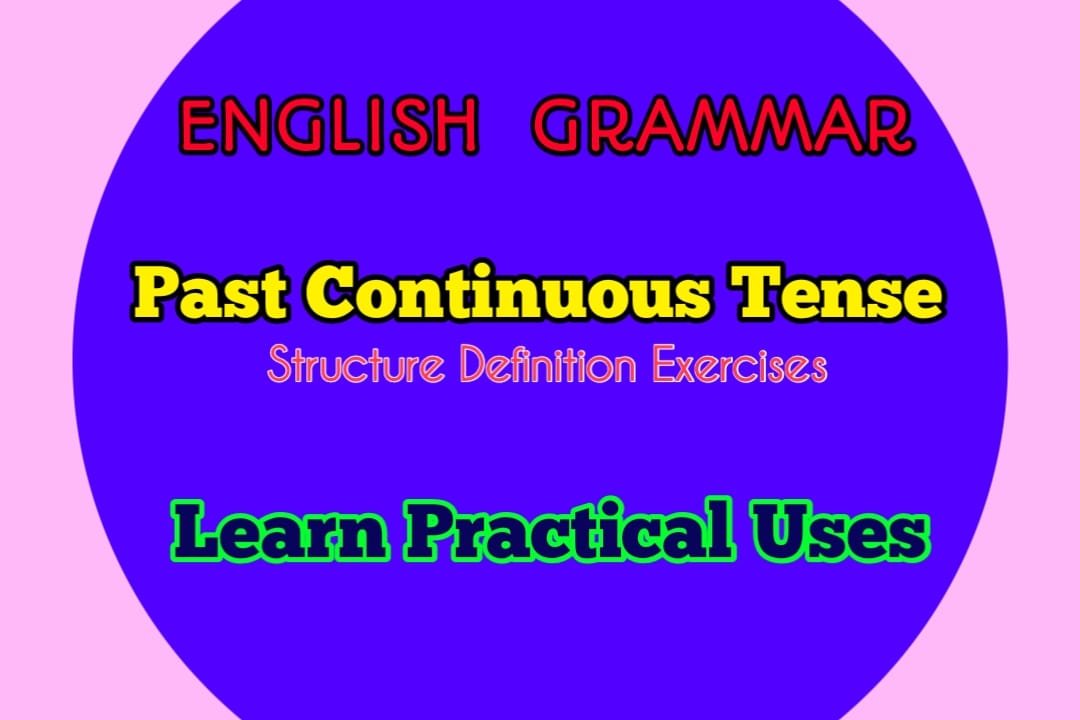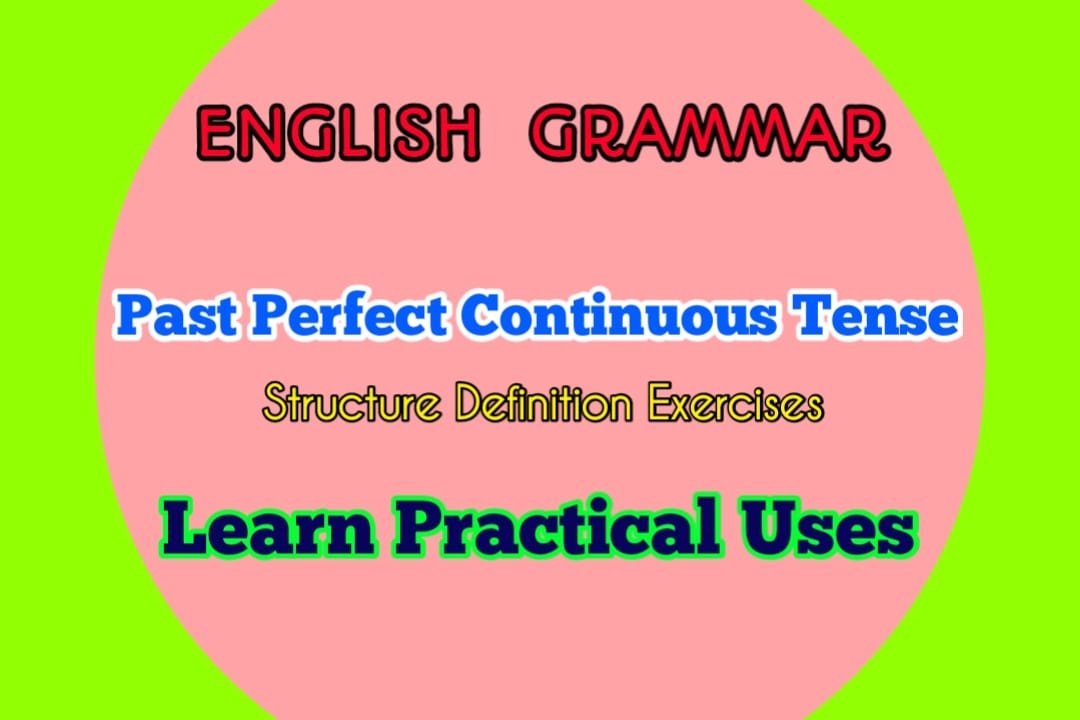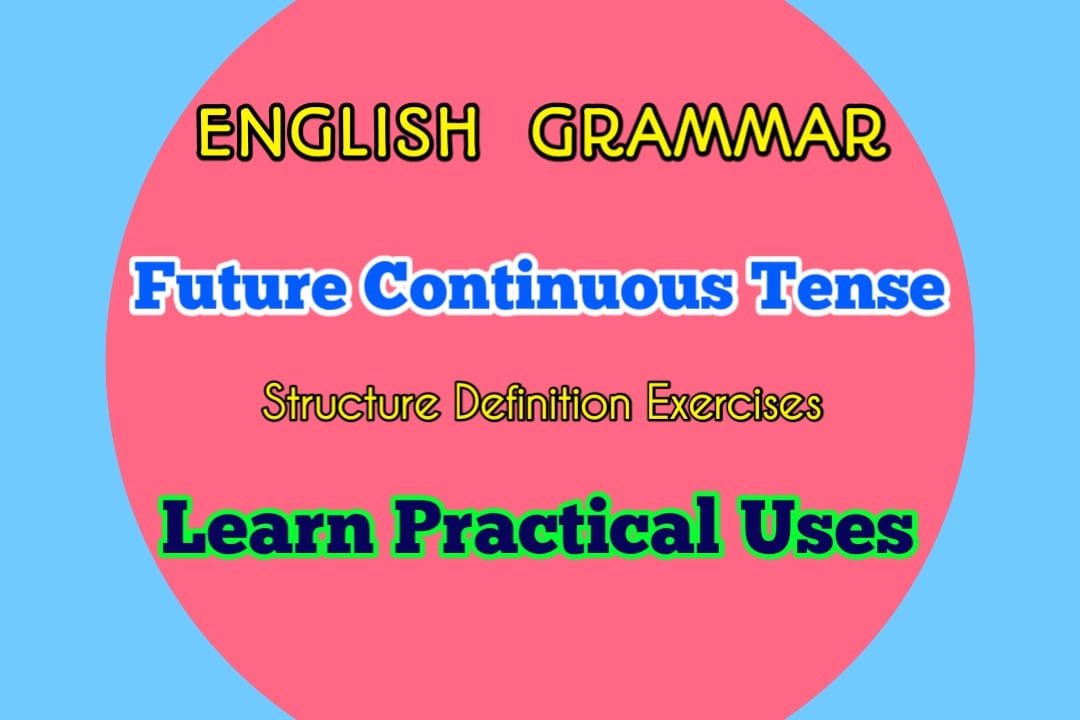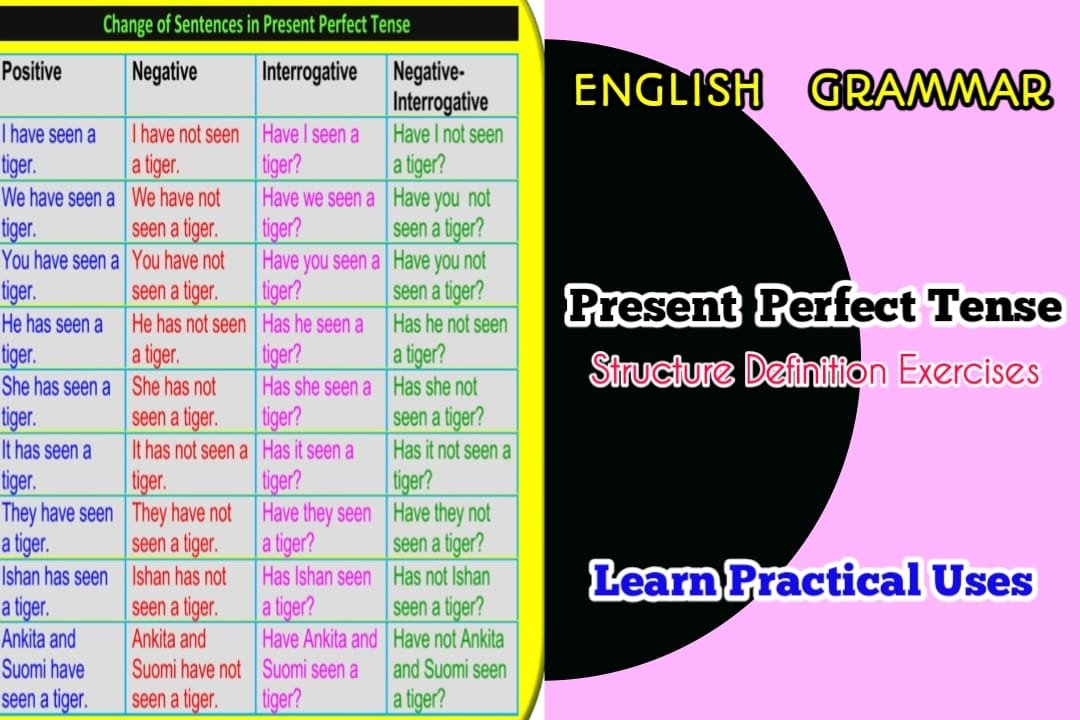Present Continuous Tense has been discussed here with its structure, rules to use, examples, and exercises. In a practical situation, the Present Continuous tense is used extensively while speaking as well as writing. So, explore the structure, rules, and examples of Present Continuous Tense that are given below.
Present Continuous Tense
Present Continuous Tense is used to describe actions happening now, at the time of speaking. For examples,
- (1) Tom is catching fish.
- (2) They are playing football.
- (3) Why are you waiting for me?
Present Continuous Tense structure
The structure of Present Continuous Tense in sentences can be of four types –
- a Positive or Affirmative Sentence
- a Negative Sentence
- an Interrogative Sentence
- a Negative-Interrogative sentence
All structures are discussed below with a table and examples in an easy way.
Positive or Affirmative Sentence
Structure
Subject + am / is/are / + Verb + ing + Object.
Table
| Person | Singular | Plural |
| 1st | I am playing football. | We are playing football. |
| 2nd | You are playing football. | You are playing football. |
| 3rd | He/She/It (any noun) is playing football. | They/(two or more nouns) are playing football. |
Other examples
- He is playing football.
- The sun is rising in the East.
- You are reading history.
- Birds are flying in the Sky.
- We are going to school.
Negative Sentence
Structure
Subject + am / is/are / + not + Verb + ing + Object.
Table
| Person | Singular | Plural |
| 1st | I am not eating rice. | We are not eating rice. |
| 2nd | You are not eating rice. | You are not eating rice. |
| 3rd | He or She or (It) is not eating rice. | They are not eating rice. |
Other Examples
- They are not playing football.
- The sun is not rising in the West.
- You are not drinking milk.
- Birds are not making houses.
- We are not studying now.
Interrogative Sentence
Structure
Am / Is / Are / +Subject + Verb + ing + Object?
Table
| PERSON | SINGULAR | PLURAL |
| 1st | Am I eating rice? | Are we eating rice? |
| 2nd | Are you eating rice? | Are you eating rice? |
| 3rd | Is he/she/(it) eating rice? | Are they eating rice? |
Other Examples
- Is he playing football?
- Is the sun rising in the East?
- Are you reading history?
- Are birds flying in the Sky?
- Are you watching the movie?
Negative-Interrogative Sentence Structure
Structure
| Am / Is / Are + Subject( If Pronoun) + Not + Verb + Object? |
| Am / Is / Are + Not + Subject (If Noun)+ Verb + Object? |
- If the Subject is “NOUN”, “Not” will be placed before “Subject”.
- Example:- Is not Messi Playing for Argentina?
- If the Subject is “PRONOUN”, “Not” will be placed after “Subject”.
- Example:- Are they not studying in college?
Table
| Person | Singular | Plural |
| 1st | Am I not eating rice? | Are we not eating rice? |
| 2nd | Are you not eating rice? | Are you not eating rice? |
| 3rd | Is he or she or it( Pro N) not eating rice? Is not John( N) eating rice? | Are they not eating rice? |
Other Examples
- Is not Ram playing football?
- Is not the sun rising in the East?
- Are you not reading history?
- Are we not doing this work?
- Are they not growing crops?
Rules to use of Present Continuous Tense
There are some following rules to be observed for the use of Present Continuous Tense in practical situations –
Rule 1. It is used to refer to an action that is going on at the time of speaking. For example,
- Birds are flying in the sky.
Rule 2. It is used to express an action that is planned for the future. For example,
- Ravi is going to Delhi next week.
Rule 3. It is used to talk about future arrangements; usually used with time expressions like ‘next week’ /’at Christmas’ / ‘tomorrow’. For example,
- My father is coming back next week.
Rule 4. There are some verbs that do not describe ‘an action’, are not ( or rarely) used in the Present Continuous Tense. Those verbs are called non-action verbs. Examples of non-action verbs are as follows-
| Verbs of Sense | Verbs of Feelings/ Emotions | The verb of mental State | Verbs of Possessions |
| See Hear Taste smell | Like Love Hate Want Desire Fear respect | Know Understand Agree Believe Doubt Trust Think Suppose remember | Own Possess Belong contain |
Present Continuous Tense in Different Sentences
How different types of sentences are formed in the Present Continuous Tense are shown below.
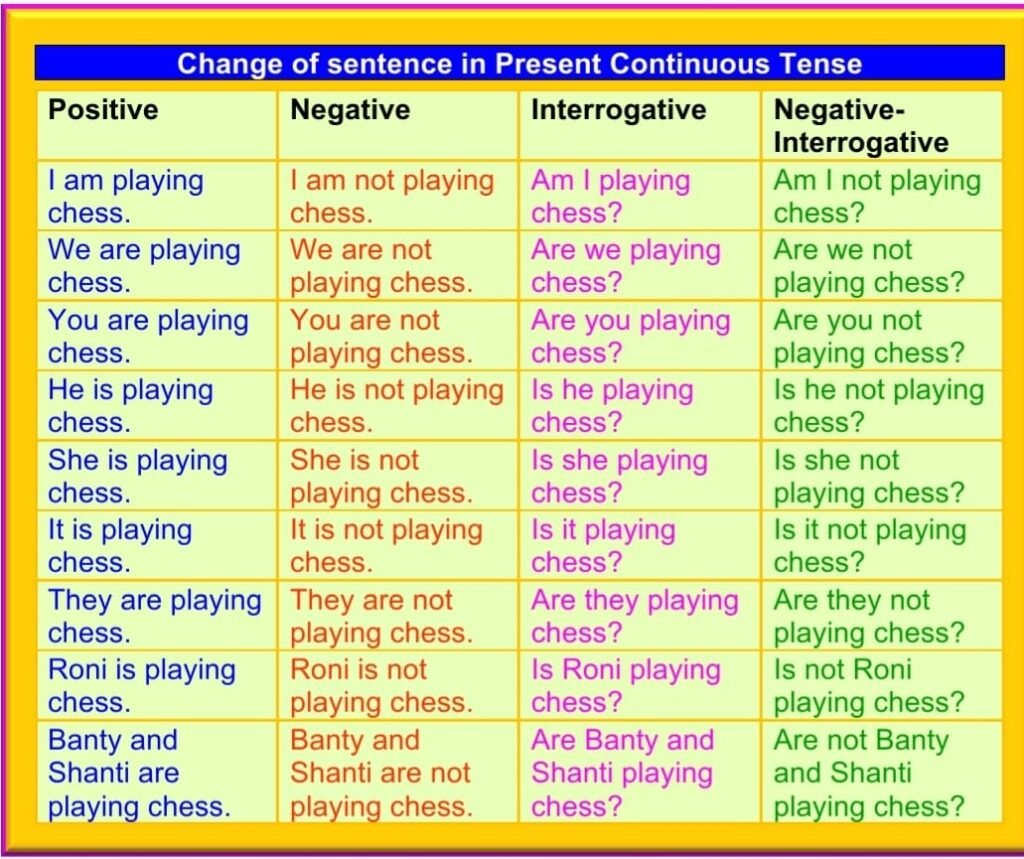
Exercises of Present Continuous Tense
1. Use the Present Continuous Tense of the verbs in the brackets.
(i) I am ………………………….. (read) a book
(ii) Suman is …………………. (go) to Delhi.
(iii) She is ……………………………….. (sing) a song.
(iv) Are the boys ………………………………… (swim) in the pond?
(v) Father is ………………………….. (come) next week.
(vi) I am …………………………….. (feel) unwell.
(viii) What are you ………………………. (do) now?
(viii) Are you not ……………………. (go) to do this ?.
2. Fill in the blanks using the correct present tense (simple present or present progressive)
of the verbs in brackets:
1. Father usually ……………… (come) back home at 12 a.m.
2. The woman always……………………………. (sing) this sad song.
3. It…………………………. (rain) here heavily at the end of summer.
4. It ……………………….(rain) very heavily today.
5. Hindus ………………(burn) their dead.
6. The children……………………. (cry) because they’re hungry.
7. This man ……………………….(know) many foreign languages.
8. The school ………………………………(close) on June 1.
9. Time and tide …………………………(wait) for none.
10. We ……………………………….(sce) the moon in the sky.



